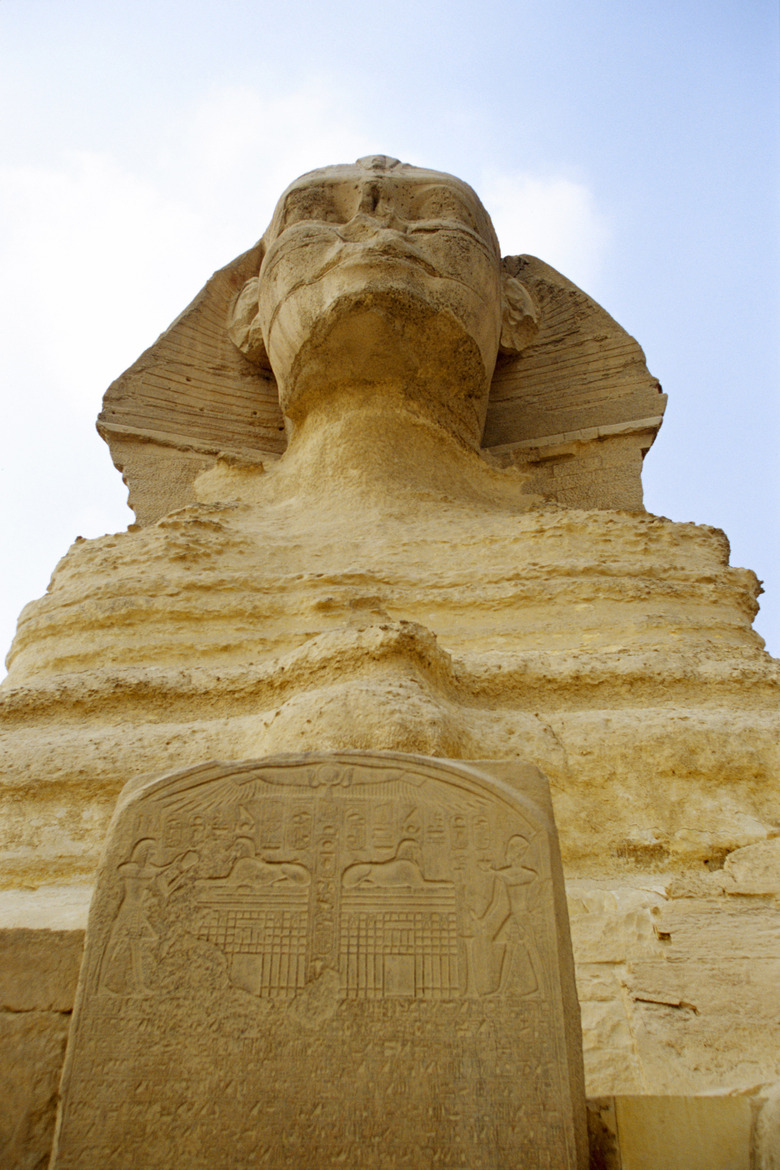How Does Weathering Affect Monuments?
If you've ever inspected a crumbling gravestone or once-engraved stone pillar now worn smooth, you've seen what weathering can do to even the strongest materials. This weathering occurs on a larger scale as well, affecting some of the world's most famous monuments. Without human intervention, weathering reclaims monuments, wearing them down to scraps of rock and soil over time. Protecting stone monuments requires ongoing preservation efforts, leaving man in constant battle with Mother Nature.
Weathering Vs. Erosion
Weathering Vs. Erosion
While weathering and erosion are often grouped together, they actually represent two distinct processes. Weathering is the process by which rock breaks down, while erosion is the process of carrying the weathered pieces of rock away. A root growing into the base of a stone monument and creating a crack is an example of weathering, while melting snow that drags the broken pieces of rock away is a form of erosion. These processes work together to damage stone monuments over time.
Mechanical Weathering
Mechanical Weathering
Mechanical or physical weathering breaks down stone without altering it chemically. An example of this is salt crystallization. As moisture in and around the stone evaporates, the mineral salts left behind form tiny crystals that can grow over time, resulting in cracks. Temperature variation can also cause mechanical weathering. As stone expands and contracts with the temperature, freezing and thawing cycles can result in cracks and other damage to the monument.
Chemical Weathering
Chemical Weathering
Chemical weathering occurs when the minerals within the rocks are chemically altered. In the process of carbonation, rainwater and carbon dioxide in the atmosphere combine to form carbonic acid. This carbonic acid dissolves minerals within the rock, weakening the structure and resulting in damage and wear. Oxidation represents another form of chemical weathering where oxygen combines with elements in the rock to form oxides. Iron-rich rocks provide a simple example of this: Oxidation results in a rusting effect similar to the rust found on exposed iron.
Biological Weathering
Biological Weathering
The weathering of monuments can also be attributed to biological processes. Animals burrowing into cracks in the base of a monument can disturb the soil and enlarge the crack. Plant roots cause similar problems and, left unattended, can eventually topple the monument. Even lichen can contribute to weathering when they grow on the surface of the stone. Lichen are rich in chelating agents, which bond to iron and other metals in the rock. By removing these metallic ions, the lichen weaken the rock, leaving it vulnerable to cracks and wear.
Notable Examples
Notable Examples
At Mt. Rushmore, the massive monument experiences hundreds of tiny cracks thanks to the effects of weathering. Without proper restoration, these cracks would widen over time, crumbing the famous presidential faces that make up the structure. Fortunately, the National Park Service keeps these cracks under close observation using a large network of tiny fiber optic cables. When larger cracks or openings occur, they are filled with Kevlar. Smaller cracks are routinely filled with silicon caulk to slow the effects of weathering and prevent further damage.
Another example is the marble Peace Monument found near the U.S. Capitol Building. Set in place in 1878, it developed a worn, crystalline surface thanks to acid rain and other elements. During a 1991 restoration effort, the monument was treated with a stone consolidant, which hardened the marble and allowed it to repel moisture to prevent future weathering.
Natural Monuments
Natural Monuments
While weathering of monuments is often seen as a negative phenomenon, weathering can also bring positive effects in the form of beautiful natural monuments. For example, the Grand Canyon and the arches of Arches National Park were all created by weathering. Of course, this weathering that brings such famous landmarks can also take them away. The famous "Old Man in the Mountain" monument in New Hampshire was created by hundreds of years of weathering, then destroyed by this same weathering, causing it to crumble to the ground in 2003. In 2008, the same weathering effects that carved out Wall Arch in Arches National Park caused the arch to topple to the ground in pieces.
References
- NASA: Introduction to Soil Forming Factors
- BBC: The Rock Cycle
- Architect of the Capital: The Peace Monument
- The New York Times: On a Somber Mission to Restore the Missing Face of a Mountain
- U.S. National Park Service: Wall Arch Collapses
- Travel and Leisure: Mount Rushmore's New Preservation Technology
- TheSpec.com: Weathered Mount Rushmore Gets Annual Facelift With Caulking
Cite This Article
MLA
Beach, Emily. "How Does Weathering Affect Monuments?" sciencing.com, https://www.sciencing.com/weathering-affect-monuments-4324/. 24 April 2017.
APA
Beach, Emily. (2017, April 24). How Does Weathering Affect Monuments?. sciencing.com. Retrieved from https://www.sciencing.com/weathering-affect-monuments-4324/
Chicago
Beach, Emily. How Does Weathering Affect Monuments? last modified March 24, 2022. https://www.sciencing.com/weathering-affect-monuments-4324/
